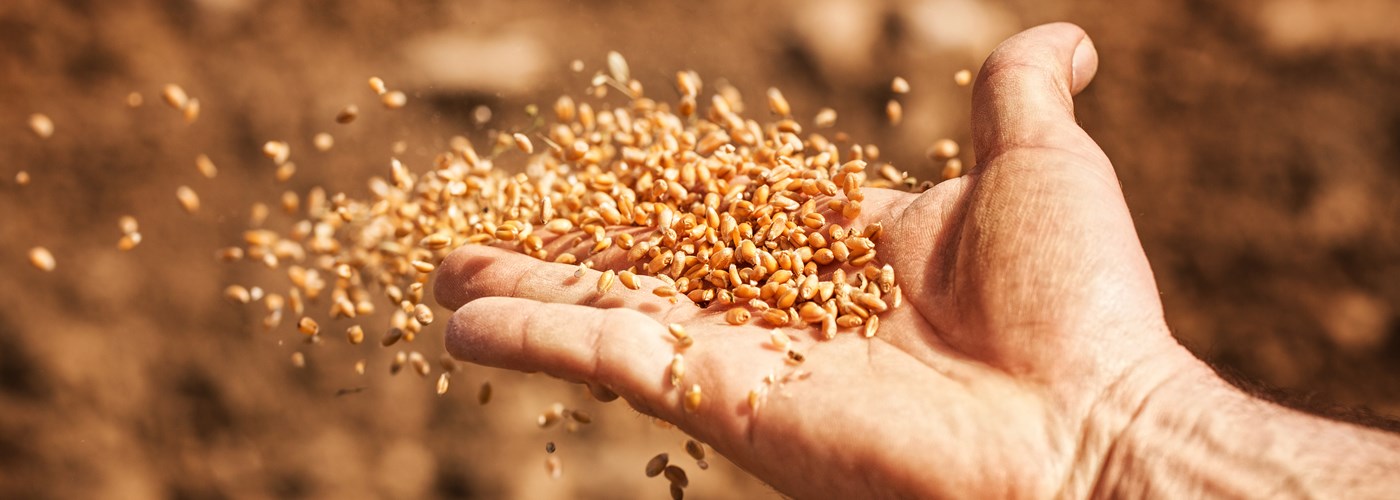
Sowing is the act of placing the seed in an appropriate place so that it can develop into a plant and produce the desired results. It is important that the seeds are healthy in order to generate healthy plants that will then give the expected results. Therefore, it is always recommended to use certified seeds which are properly prepared for their purpose.
Sowing
Sowing is the act of placing the seed in an appropriate place so that it can develop into a plant and produce the desired results.
It is important that the seeds are healthy in order to generate healthy plants that will then give the expected results. Therefore, it is always recommended to use certified seeds which are properly prepared for their purpose.
The following types can be distinguished:
- Direct sowing: done directly in the final places, where the plants will develop until harvest. This is usually done for cereals, legumes, i.e. crops with large seeds;
- Indirect sowing in seedbeds and then in nurseries: for future grafting and planting. E.g.: fruit plants.
- Indirect sowing in seedbeds: when using small seeds (tomato, lettuce, tobacco, rice), whose plants are then transplanted.
Planting
- Direct planting: when using plant material, such as sugarcane, banana, pineapple, cassava, and sweet potato.
- Planting in nurseries for further transplantation: coffee, cocoa, sisal, rubber tree.
In order to have a good sowing, some points must be taken into account:
- The sowing method;
- The sowing rate/planting density;
- The sowing depth;
- The sowing date;
- The quality of the seed to be used;
- The type of instruments to be used.
Sowing methods
- Throwing: when the seeds are released in the place where they are intended to develop without respecting any regular distance. This does not offer much security because there is not a desirable use of space and the plants will not have an ideal space to develop.
- Localized: this method consists of using a bar or a recommended spacing between the seeds/plants, thus ensuring that the plant has enough space not to compete with each other. E.g. corn, cotton, peanuts.
Advantages of localized sowing (lines or furrows) in relation to throwing:
- It ensures greater seed savings (lower sowing rate);
- It allows a more uniform distribution of the seed;
- It allows greater uniformity in the sowing depth;
- Due to lower density, there is less competition between plants;
- The attack of pests and diseases is generally minor;
- It allows greater ease in cultivation practices.
Planting density depends on aspects such as:
- pests, diseases and weeds;
- soil and climate;
- location;
- species/crop;
Plant density vs. environmental resources:
- Water: when there is water deficiency, density should be reduced.
- Nutrients: fertile soils or soils with high availability of nutrients can use higher density.
- Light: density increase, reduce the light available per plant to ensure maximum interception:
- minimize competition within and between species
- improve the distribution pattern and leaf orientation
- increase density until it reaches the optimal LAI.
An increase in plant density may cause:
- Reduction of the root system;
- Increase of plant height;
- Increased susceptibility to eyespot;
- Increased plant mortality rate due to competition between plants;
- Increase in the incidence rate of diseases because plants become more sensitive;
- Delays maturation.
Crops with large seeds
- Deep sowing;
- Seeds with a higher amount of carbohydrates stored;
- They can face thicker layers of soil.
- Sowing Dates
Depend on:
- Climatic conditions
- Biological particularities of crops
In non-irrigated conditions, it is important to take into account:
- the rainy season – sowing should take place as soon as the rains start.
Delay in sowing is often due to:
- Dry land that makes soil preparation difficult;
- Priority crops (staple foods) delay sowing of others
- Lack of family labor
- Lack of seeds
- Amount of water available
- Yield reduction
- a delay of 2, 4 and 6 weeks in relation to the optimal date reduces cotton yield by: 14%, 40% and 50% respectively
In Mozambique there are two distinct sowing seasons:
- Warm season (the first season): characterized by rains, higher temperatures and the cultivation of cereals, legumes, oilseeds (grains) and hybrid seeds (mainly of vegetables).
- Fresh season (second season): characterized by lower temperatures, suitable for growing most vegetables.
When defining the crop to be produced, the season intended for production should be considered, because the environmental conditions of each season must be taken into account. For example, the ideal time to produce vegetables is in the fresh season (the second season), but some varieties allow production in the hot and rainy seasons (hybrid and adapted varieties).






